
When starting a new siding replacement project, there are so many choices you have to make.
Which contractor will you choose? What type of siding material do you want? What products do you like best? What styles do you like?
Once you’ve finally made one decision, another creeps up behind you, and you can almost hear every option out there whispering, “Pick me!” “No, pick me!” “No, me!” in your ear.
Whether you’re considering James Hardie fiber cement siding for your project or have already decided on it, there are many different styles and colors to choose from.
Southwest Exteriors has been a siding replacement contractor for over 30 years now. We exclusively offer James Hardie siding solutions because we believe they are the best option for siding replacements.
James Hardie products are made of fiber cement, a durable, long-lasting material that can withstand the harsh Texas climate. It will not bend or misshape like vinyl siding, rot like wood siding, or crack like stucco.
In this article, we will detail the different products’ styles and colors that James Hardie offers to help guide you through the many different options. We will outline each style for horizontal, vertical, shingle, and artisan siding, trim and soffit boards, and textures available.
After reading, you’ll be familiar with all the options for you to choose from James Hardie for your siding replacement and can have a resource to easily access this simple guide.
HardiePlankⓇ Lap Siding
Lap siding, also commonly referred to as horizontal siding, is the most popular style of siding. It refers to the direction the siding boards are laid against the exterior, so the boards are parallel to the horizon.
For HardiePlankⓇ, there are two types of finishes available: select cedarmillⓇ and smooth.
Select cedarmillⓇ mimics the look of wood grain on the fiber cement panels. The smooth finish is sleek and classic.
There are three different lap siding board profiles available in both select cedarmillⓇ and smooth.
Traditional lap
Traditional lap siding is laid horizontally, with the bottom of each board slightly overlapping the board below it. This is the most common type of horizontal siding.
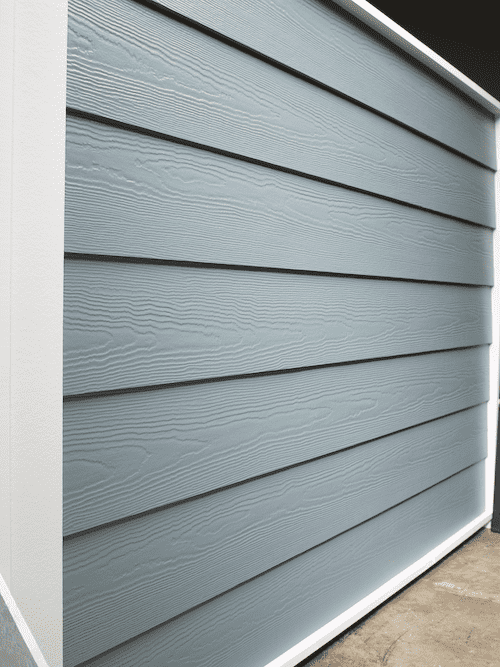
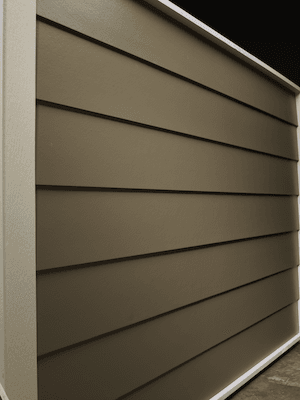
Beaded
Beaded siding consists of horizontal boards with a small, bead-like strip running between each board. Beaded cedarmill is inspired by coastal communities, while beaded smooth gives your home a modern, contemporary look.
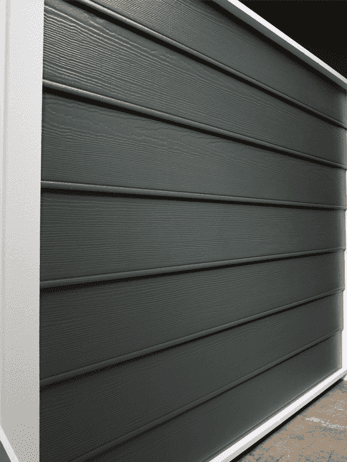
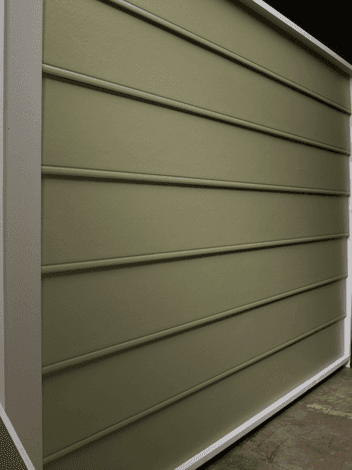
Custom ColonialTM
Custom ColonialTM siding is Hardie’s Dutch lap style, where the larger horizontal boards are separated by skinny, inverted segments of the siding.
Available as both smooth and wood-like finish, Colonial RoughsawnⓇ and Colonial SmoothⓇ reflect that traditional, historical look.
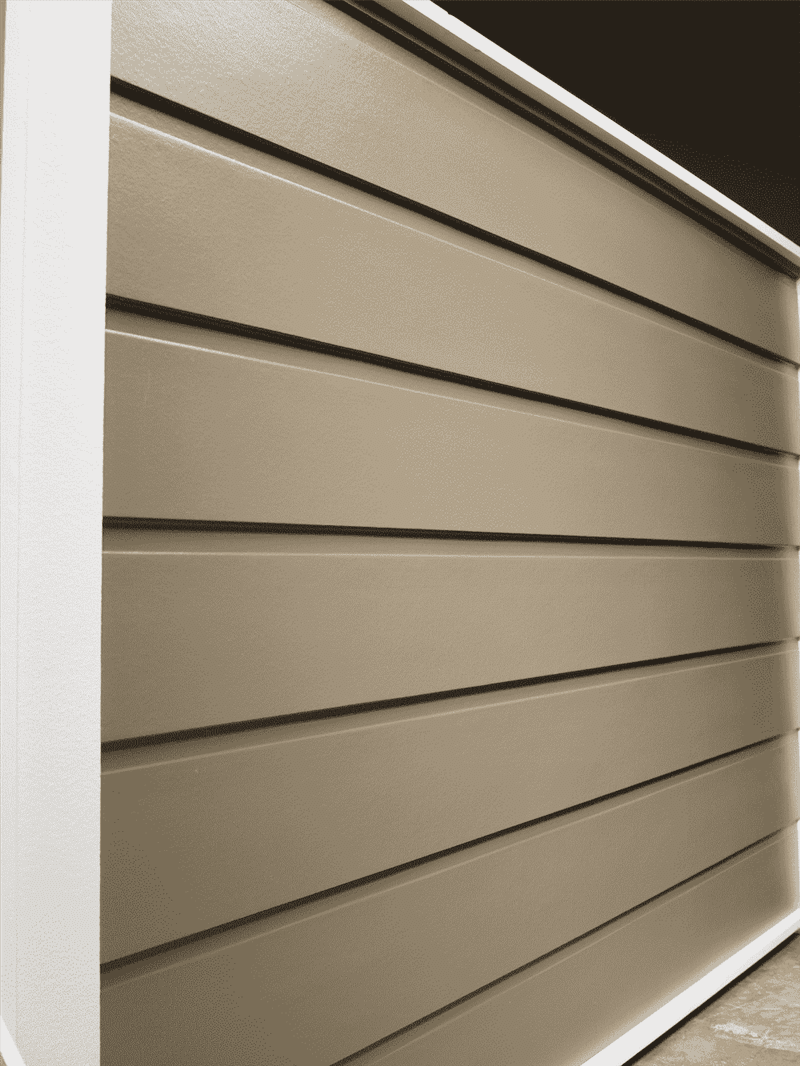
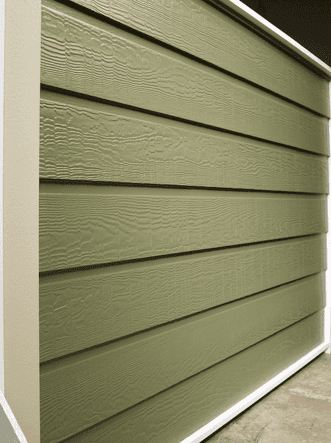
HardiePanelⓇ Vertical Siding
Hardie carries two styles of vertical siding: stucco and sierra 8.
Stucco
Hardie provides the comforting, classic look of stucco with the benefits of fiber cement. This look provides you with an intricate, unique texture different from wood grain.
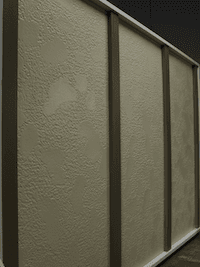
Sierra 8
This vertical style is similar to Custom ColonialTM, with smaller dividends between the boards. Sierra 8 is available as smooth or select cedarmillⓇ and elongates your home, providing dimension without complication.
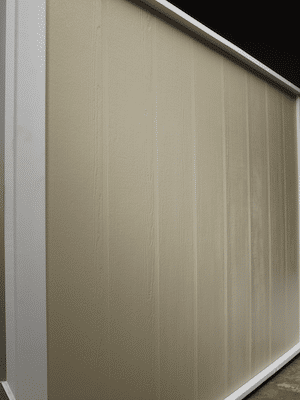
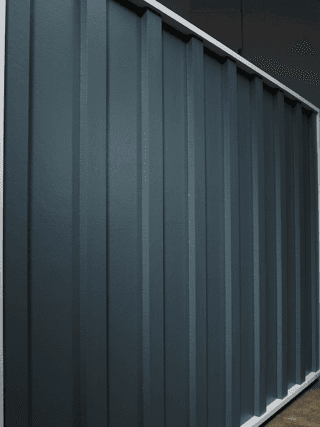
Download this FREE guide to James Hardie siding!
HardieShingleⓇ Siding
Shingle siding is made of smaller siding boards of either uniform or varying sizes laid in many different ways. Also known as shake siding, this style gives your home a Cape Cod look and is available with a cedar mill finish.
There are three styles of HardieShingleⓇ siding: straight edge panel, staggered edge panel, and scalloped.
Straight edge panel
This shingle style is made up of small shingle boards cut at varying widths but the same length to give a sharp edge to each horizontal line. This style provides a classic yet rustic look for your home.
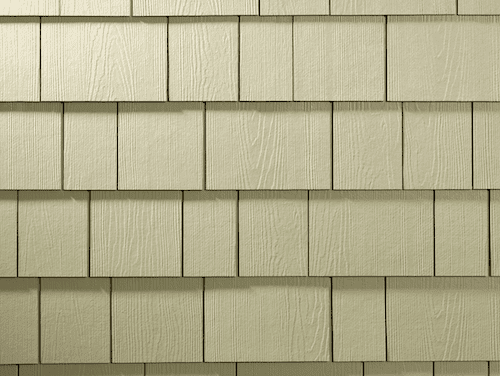
Staggered edge panel
This style is laid following no horizontal line, creating a staggered, beautifully chaotic look great for a ranch home or cottage look.
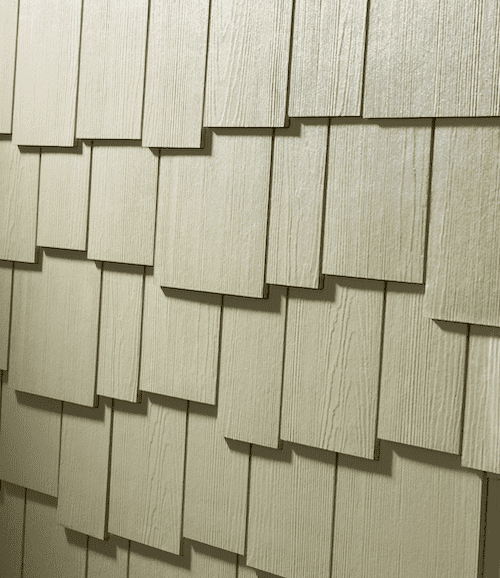
Scalloped
This style is made of small shingle boards with half-rounded edges, creating a fish-scale look. This classic style gives your home a historical and coastal aesthetic.
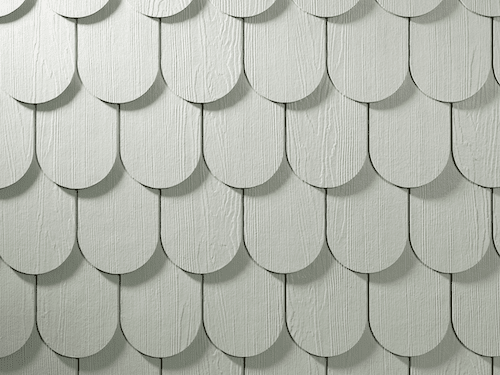
Schedule your commitment-free consultation today!
Aspyre Collection
This new collection of styles offered by Hardie gives an extremely modern and sleek look. It consists of two subcollections: Artisan and Reveal.
ArtisanⓇ
Hardie describes this collection to have a precise fit and finish to provide streamlined styling. Each style is 0.625 in. thick and weighs 4.55 lbs. per square foot and comes primed for paint.
V-Groove siding
This style is similar to a Dutch lap style where the main boards are divided by small v-grooves. It gives your siding dimension without being over the top.
Shiplap siding
This style provides a more straight-edge look than the v-groove and is a traditional and classic look.
Square channel siding
This style is similar to shiplap, with wider channels between the main panel boards. It gives your home a more modern look than shiplap yet still reflects a traditional style.
Bevel channel siding
This style is about the same as the square channel siding, but the channels have a small bevel, or angled slope, to emphasize those panels. If you’re looking to add a little more dimension to your siding, this style is for you.
RevealⓇ Panel System
This collection of siding is made up of rectangular and square panels rather than longer boards. The panels are 0.438 in. thick and weigh 3.1 lbs. per square foot. They have two trim options to fill the space between the panels and two different nail options.
You can choose between countersunk or exposed fastener nails. Countersunk fasteners are concealed, so they will not be visible on the trim.
Recess Trim
This trim style is hidden between panels, filling the majority of the space. It creates a smooth connection between panels while also accentuating the lines.
Surround Trim
This is an exposed trim that gives a more industrial look to your siding. It is a u-shaped trim that fits between the grooves of the panels, giving it a strong definition between panels.
Both of these collections from Hardie’s Aspyre Collection are perfect if you are looking for the most modern styles for your home. They are also made of fiber cement like all other Hardie siding styles.
HardieTrimⓇ Boards
Trim is one of the finishing touches on your new siding. HardieTrimⓇ can border not only your trim but the fascia, doors, windows, and columns.
There are three different trim boards, each available in smooth and rustic: 4/4, 5/4, and batten boards.
Each of these collections is a part of the James Hardie Statement CollectionTM, available in a range of classic, neutral colors that are most popular. However, there are hundreds of colors for you to choose from.
4/4
These boards are ¾ in. thick and available in either smooth or rustic. Rustic has a wood-like finish to fit that traditional aesthetic.
5/4
These boards are 1 in. thick and also available in smooth or rustic.
Batten boards
These boards go hand in hand with HardiePanelⓇ vertical siding to create the board and batten style where the batten boards are placed between each vertical board. They are available in Rustic GrainⒸ and smooth and are ¾ in. thick.
HardieSoffitⓇ Panels
Soffit is the underneath area that stretches between the top of the siding to the roofing’s edge. It is an integral part of a siding replacement to protect your home and upgrade its look. There are seven different styles of HardieSoffitⓇ panels.
Non-vented
Non-vented cedarmillⓇ is the most popular type of soffit with a texture to mimic wood but resist the issues that come with wood soffit like rotting and warping.
Non-vented soffit panels are also offered in smooth to compliment any style of siding.
Vented
Pair your smooth or cedarmillⓇ siding with perfectly matching vented soffit panels with small holes for ventilation to meet coding regulations.
Vented soffit panels are essential to help air circulate through and out of the attic and can also help to protect against mold.
VentedPlusTM
This type of soffit has ventilation holes that are shaped like dashes to provide more airflow than any other engineered wood or fiber cement vented soffit.
Offered in cedarmillⓇ or smooth, this type of soffit is perfect for homes built on close lot lines with restrictions on vented soffit use.
Beaded Porch Panel
This style mimics the same look as beaded horizontal siding and is a traditional look. These panels come only in smooth and are made for porch ceilings, and ventilation is not required on porch ceilings.
What is the most expensive type of James Hardie fiber cement siding?
The most expensive type of James Hardie fiber cement siding is the Artisan collection. This collection features thicker, more substantial boards with deeper shadow lines for a more authentic, high-end appearance. The Artisan collection also comes in a variety of textures and profiles, including smooth, stucco, and cedar mill. The cost of Artisan collection siding will depend on factors such as the size of your home, the complexity of the installation, and the contractor you choose.
How much are the different types of James Hardie fiber cement siding?
The cost of James Hardie fiber cement siding varies depending on several factors such as the size of the home, the type of siding, the complexity of the installation, and the contractor you choose. However, here are some approximate price ranges for the different types of James Hardie fiber cement siding:
- HardiePlank Lap Siding: This is the most popular type of James Hardie siding. The cost can range from $12 to $25 per square foot.
- HardieShingle Siding: This type of siding mimics the look of cedar shingles. The cost can range from $12 to $18 per square foot.
- HardiePanel Vertical Siding: This type of siding is often used for modern or contemporary homes. The cost can range from $11 to $18 per square foot.
- Artisan Lap Siding: This collection features thicker, more substantial boards with deeper shadow lines for a more authentic, high-end appearance. The cost can range from $18 to $25 per square foot.
It's important to note that these are approximate price ranges and the actual cost can vary depending on many factors. Prices vary based on size, elevation, finish, and existing siding coverage.
How to choose the right Hardie siding style for you
Now that you are familiar with all of James Hardie’s siding styles, you can narrow down your favorites and choose the right style for you.
We’ve covered a lot of different styles, from the direction your siding can be laid to different trim options. How can you choose the right style?
With many options available, the process of elimination is your best friend. Have an idea of the styles and looks you do like, and slowly get rid of the ones you don’t.
Researching different Hardie siding styles and using resources like Pinterest can help you to find what you like best and narrow down your wants.
Driving around your neighborhood and looking at different siding styles can also help you see real examples of those styles, whether they are made from Hardie or not.
When working with Southwest Exteriors, our design consultants are experts on Hardie siding products, styles, and installation processes. Our goal is to serve you and help make your dreams come true with your siding project.
We will help guide you through all products offered, talk with you about your goals and wants, and assist you in choosing the right siding style for you. However, we know that this is your project and will never push you into choosing one product over the other.
Want to read more about the benefits of Hardie siding? Check out this article about the material, maintenance, and installation of Hardie siding to learn about its benefits.


